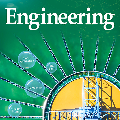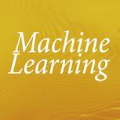In this paper, we propose a machine learning approach to recognise engineering shape features such as holes, slots, etc. in a CAD mesh model. With the advent of digital archiving, newer manufacturing techniques such as 3D printing, scanning of components and reverse engineering, CAD data is proliferated in the form of mesh model representation. As the number of nodes and edges become larger in a mesh model as well as the possibility of presence of noise, direct application of graph-based approaches would not only be expensive but also difficult to be tuned for noisy data. Hence, this calls for newer approaches to be devised for feature recognition for CAD models represented in the form of mesh. Here, we show that a discrete version of Gauss map can be used as a signature for a feature learning. We show that this approach not only requires fewer memory requirements but also the training time is quite less. As no network architecture is involved, the number of hyperparameters are much lesser and can be tuned in a much faster time. The recognition accuracy is also very similar to that of the one obtained using 3D convolutional neural networks (CNN) but in much lesser running time and storage requirements. A comparison has been done with other non-network based machine learning approaches to show that our approach has the highest accuracy. We also show the recognition results for CAD models having multiple features as well as complex/interacting features obtained from public benchmarks. The ability to handle noisy data has also been demonstrated.
翻译:在本文中,我们提出一个机器学习方法,以识别CAD网格模型中的工程形状特征,如洞洞、空格等。随着数字归档的出现,3D印刷、部件扫描和反向工程等较新型制造技术的出现,CAD数据以网状模型代表的形式扩散。由于网状模型中的节点和边缘数量以及出现噪音的可能性越来越大,直接应用基于图形的方法不仅昂贵,而且难以调换数据。因此,这要求设计出更新的方法,用于以网状图像形式体现的CAD模型特征识别。在这里,我们显示一个离散版本的Gaus地图可以用作特征学习的签名。我们表明,由于网状模型不仅需要更少的记忆要求,而且培训时间也越来越少。由于没有涉及网络结构,超常参数的数量要少得多,而且可以在更快捷的时间内调整数据。还非常接近于使用3D阵列内心神经基模型的特征识别方法,而我们以高端的内径网络的精度也显示,而我们不甚需要最精确的CN。





